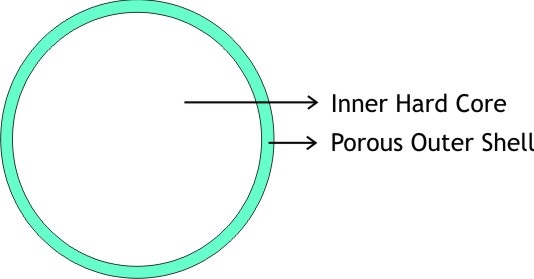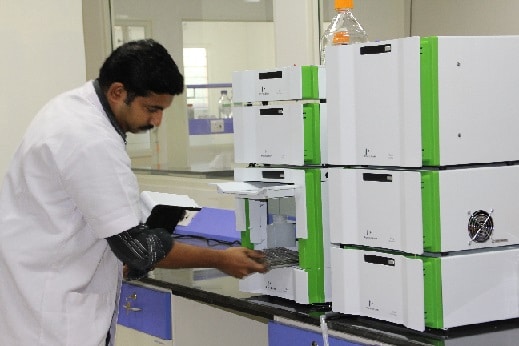Core Shell Column Packings- A Challenge to UHPLC

The era of UHPLC or fast LC started in 2004 when sub 2 – μm particles were introduced. Typically modern ultrafast UHPLC columns are 15 mm long with an internal diameter of 2.1 mm in comparison to typical HPLC columns which are 150 – 250 mm long with 4.6 mm id.

The advantages of UHPLC could be realized only after technological advances in instrumentation permitted operation at higher pressures up to 15,000 psi against normal operational column pressures of 5000 – 6000 psi. Advancements in electronics and detector signal processing also permitted recording of fast signals and narrow peaks.
All major manufacturers came up with versions of UHPLC or fast LC some of which are listed here:
| Manufacturer | Model |
| Agilent Technologies | Infinity Series |
| Waters | Acquity and Nano Acquity |
| Perkin Elmer | Flexar FX series |
| Shimadzu | UFLC-XR Prominence |
| Thermo Corporation | Accela High Speed LC |
Columns packed with sub-2μm particles generate high-back pressures which are not tolerated by standard HPLC instruments. Innovations in design led to the range of UHPLC instruments capable of withstanding high pressures. The problem was resolved through development of core shell particles which provided increased resolution and greater sensitivity as UHPLC systems but at a significant lower cost.
Core shell or spherically porous particles as HPLC sorbents were introduced by Horvath and co-workers in late 1960s and comprised of 30 – 50 μm nonporous glass spheres coated with 1 to 2 μm thick porous organic layer. Around same time Kirkland fused porous spherical particles to a 10 μm solid core. 5μm particles were developed in 80s. Advanced Material Technologies introduced the 2.7 μm core shell particles and in the years after 2007 others also introduced a range of core shell particles packings ranging in sizes from 1.3 μm-2.6 μm. In the year 2009 Phenomenex introduced spherical shaped particles with smooth surface under the trade name Kinetex.
| Supplier | Particle Trade Name supplier |
| Phenomenex | Kinetex |
| Advanced material Technologies | Halo |
| Macherey Nagel | Nucleoshell |
| Thermo Fisher Scientific | Accucore |
| Knauer | Blue Shell |
| Agilent Technologies | Poroshell |
| Chroma Nik Technologies | Sunshell |
Benefits offered by core shell packings
Superior performance on both HPLC and UHPLC systems
Very high resolution and efficiency. Number of theoretical plates for such columns lie in the range of 200,000 to 300,000
Efficiency is comparable to sub2-μm size fully porous packings but without high-back pressure problems encountered with UHPLC systems
High flow rates lead to generation of frictional heat. Core shell particles are effective in dissipation of heat generated by mobile phase passing through the column at high velocities
Van Deemter equation comprises of three parameters which are responsible for band broadening, namely, eddy diffusion, longitudinal diffusion and mass transfer. Separation efficiencies are greatly enhanced by significant reduction of all these parameters when using core shell packings in comparison with fully porous particles
Reduction in solvent composition and faster analysis
Lower levels of detection and quantification
Replacement of traditional 3 μm and 5μm analytical separation packings with core shell packings can result in significant improvements in resolution, sensitivity and speed of analysis.
You may be interested in knowing more on core shell column suppliers. Please see the links provided and do share your experiences with us.





[…] packaging materials have have opened up new fields of applications. The advantages offered by core shell packings, monolith packings and zirconia packings have already been discussed in earlier […]
Hello to every body, it’s my first pay a quick visit of this website;
this website consists of remarkable and in fact excellent
stuff designed for visitors.